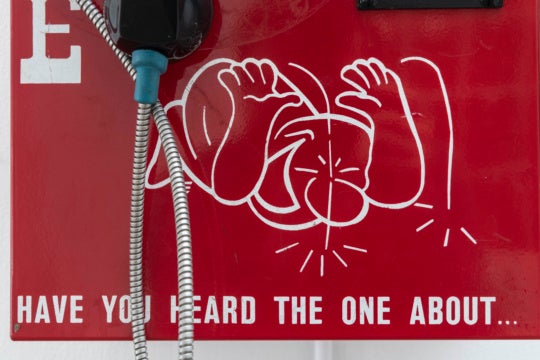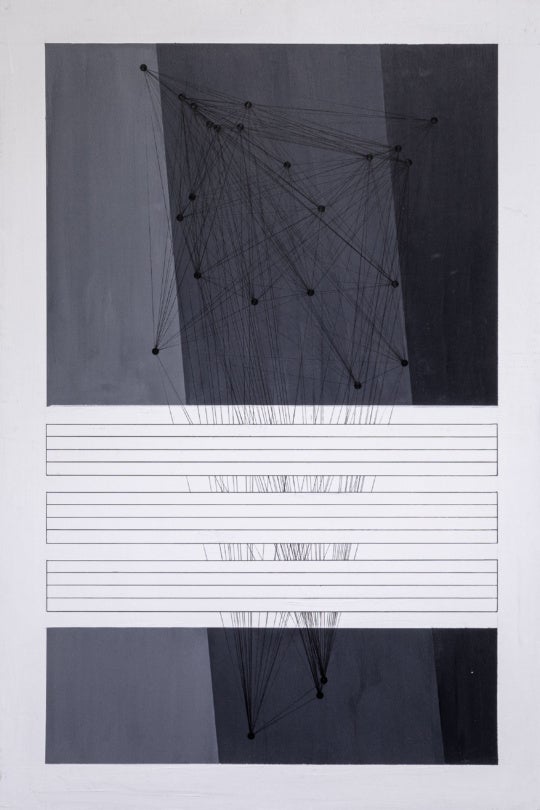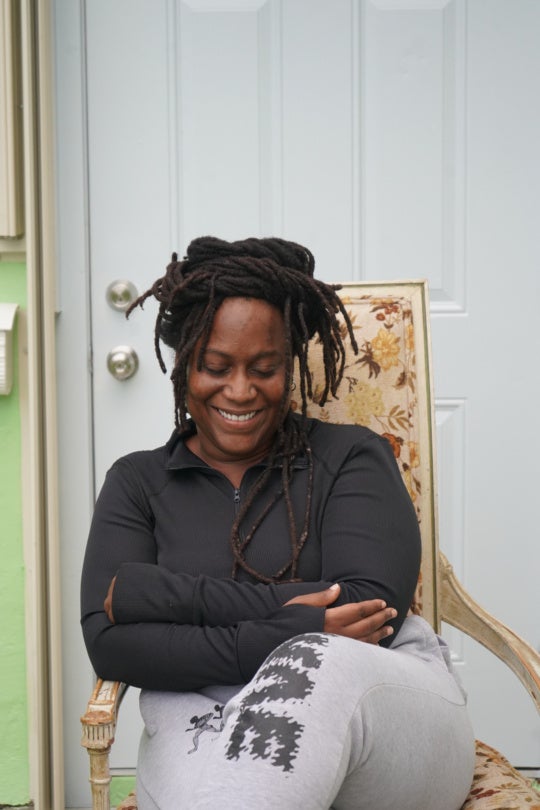
Paul Stephen Benjamin, the artist behind Black is the Color, a video installation at the High Museum of Art, and “Come Over,” an exhibition of seven artworks at Gallery 72, is reifying the notion of blackness — black is beautiful. He articulates his appreciation for the color black in works comprising paint, video, sound, and fabric. But he’s not using icons and semiology that only a black audience would relate to. His message is broader, as it attempts to rectify the negative associations that black has in our culture.
I visited Benjamin’s studio at the Atlanta Contemporary Art Center a few years ago, where he showed me a working version of the piece that is on view at the High Museum through May 14. It features a looped segment of Nina Simone’s performance at Town Hall in which she poignantly sings the phrase “black is the color.” Even in its early stage, the video was seamlessly edited. It plays on about 40 old television sets stacked against the wall, with cords and wires snaking across the floor.

Nina Simone’s voice is audible as you exit the elevator into the contemporary art gallery, and it leads you to an alcove where the piece is installed. Again and again, the mournful phrase “black is the color” repeats; Simone’s earnestness is palpable. By looping this particular phrase, Benjamin seems to be saying that the current state of black affairs isn’t much better than when Simone sang her song that so poetically conveyed the hardships and oppression that black people have endured for centuries.

While sound is a major component of Black is the Color, another work, Come Over, Over Come, on view at Gallery 72, is entirely visual. It is also a stack of television sets, this time with each screen featuring a video montage of one letter so that the whole spells out: “come over, come over, shall we.” Images of notable black personalities, such as Lebron James, Lil’ Wayne, Medgar Evers, and the Black Panthers , are interspersed in the montages, driving home the message of strength, wisdom, and leadership.
A deceptively simple quintuplet of panel paintings are hung one next to the other, and individually titled Black, Dark Black, Very Black, Totally Black, and New Black. In their simplicity, they recall Ellsworth Kelly’s Blue, Green, Red that hangs in the lobby of the High Museum. These panels are painted in varying shades of black, suggesting the multifarious and nuanced differences that comprise blackness.

Propped against the wall and flowing across the gallery floor, Black Cotton Flag Made in Georgia brings to mind David Hammons’s reimagined U.S. flag in red, black, and green (African American Flag) that flies high outside the Studio Museum in Harlem. Benjamin’s large flag hangs elegantly from a pole that reaches to the ceiling, the fabric flowing across the floor. The wall label lists the materials as black cotton, black thread, black sweat, and black labor, a reference to the harsh truth that the U.S. was built on the blood, sweat, and tears of African Americans.
“Come Over” is an invitation to closely look at black: the color, the people, and by his own merit, the culture of blackness. Through centuries of oppression, the black body has been left abused by the system, engendering feelings of inadequacy in the collective psyche. Benjamin’s work is an affirmation, a piecing together of the broken and bruised body to be made beautiful again.
As seen in the documentary of Nina Simone available on Netflix, the chanteuse was not satisfied being a stellar musician alone; she felt that “an artist’s duty … is to reflect the times.” In channeling the spirit of Simone through his work, Benjamin seeks to rectify the negative portrayal of blackness in society, allowing us to see beauty in the color black and its people.
“Come Over” can be seen at Gallery 72 through April 7. “Black is the Color” remains on view at the High Museum through May 14.
Shantay Robinson earned her MFA in Writing from SCAD. She currently hosts her blog, the Third Eye Site, which looks closely at the arts in Atlanta. She has also written artist profiles for AFROPUNK and Urban Lux Magazine. She was a participant in the first cycle of BURNAWAY’s Emerging Art Writers Mentorship Program.




